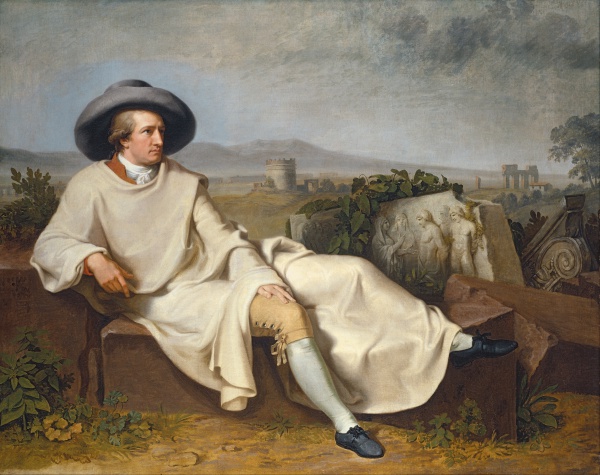Facts About Goethe in the Roman Campagna
Johann Heinrich Wilhelm Tischbein's 1787 painting "Goethe in the Roman Campagna" elegantly captures the essence of Johann Wolfgang von Goethe during his Italian sojourn. Goethe's adventures and reflections from this journey are vividly recounted in his book "Italian Journey" published between 1816 and 1817. Since 1887, this iconic painting has been a proud exhibit of the Städel Museum in Frankfurt.
Rendered in a Neoclassical style, the painting depicts Goethe seated among Roman ruins with the serene Campagna di Roma in the background. This artistic choice reflects the Neoclassical era’s admiration for antiquity, simplicity, and balanced composition. Goethe’s passion for classicism is evident, particularly in his collaboration with Tischbein. The artwork cleverly integrates elements from Goethe's literary pursuits and his love for the visual arts.
The Städel Museum acquired this masterpiece thanks to a generous donation from Adèle von Rothschild. This acquisition significantly contributed to elevating Goethe to the status of a national cultural icon in Germany.
Goethe's trip to Rome was not merely for leisure; it was a quest to immerse himself in ancient history and seek personal transformation after facing various life challenges. His camaraderie with Tischbein was rooted in their mutual admiration for classicism and ancient culture. Despite their different personalities, they traveled together through Italy until they eventually parted ways in Naples due to diverging interests.

 Poland
Poland